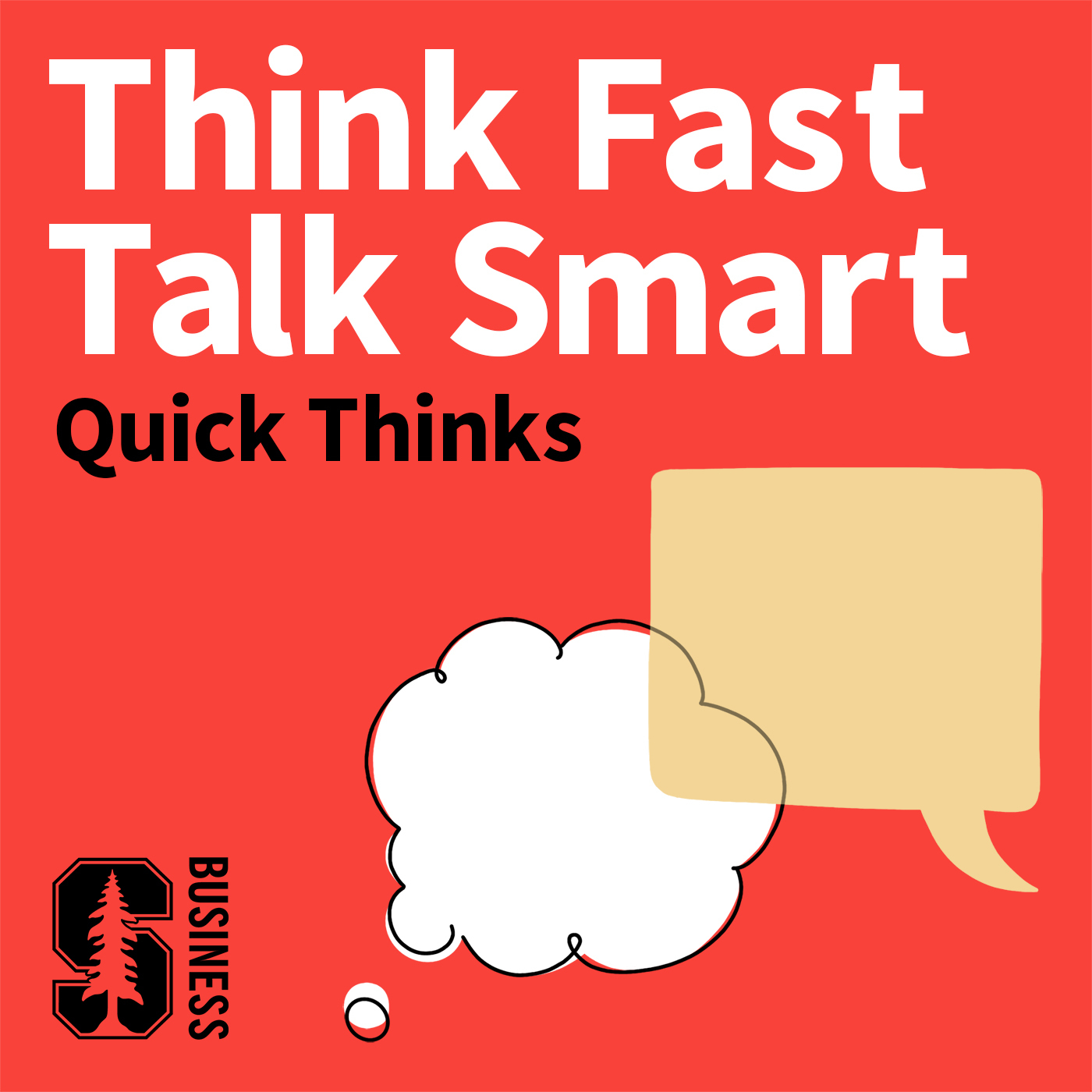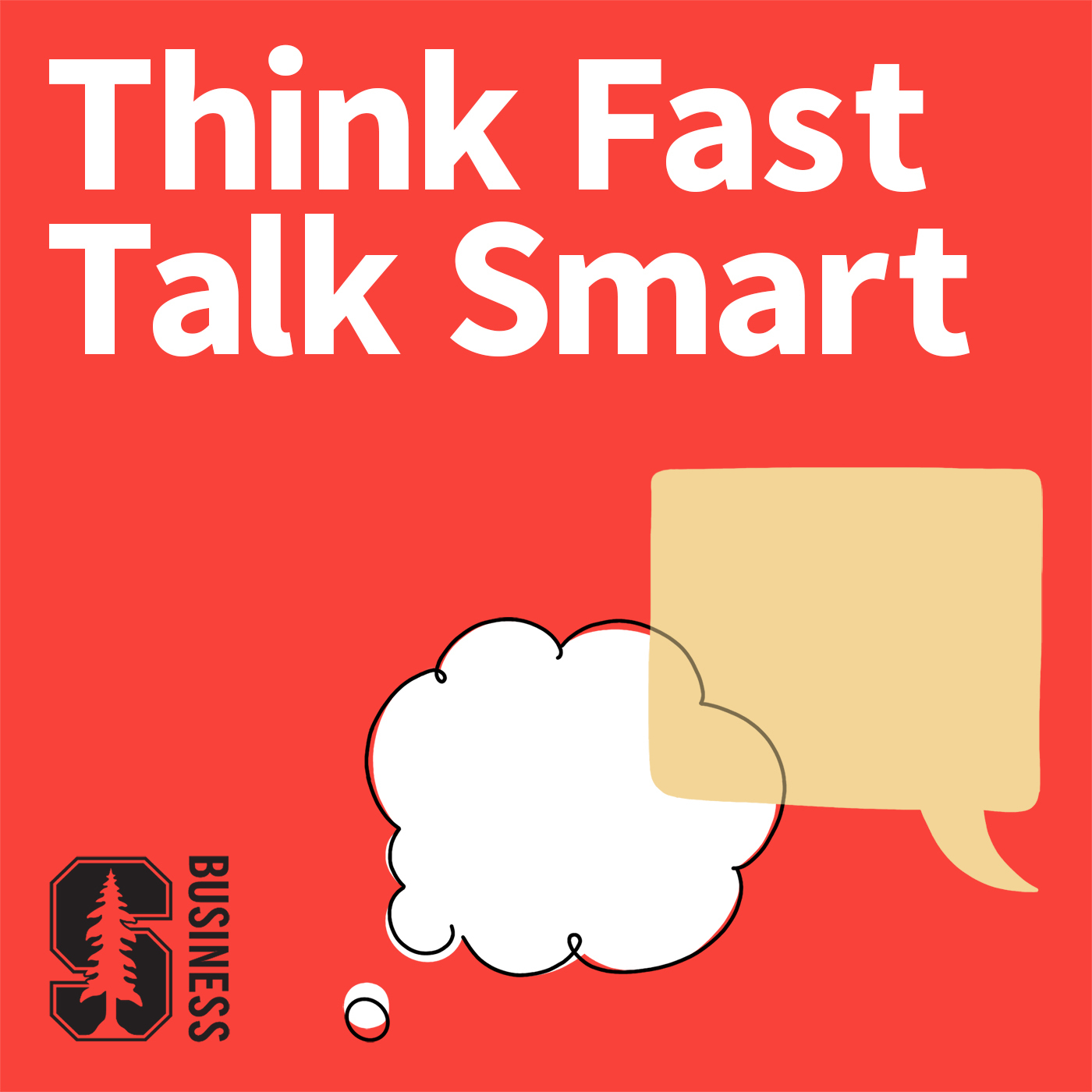
9. Quick Think: How Being Present-Oriented Improves Communication

Think Fast, Talk Smart: Communication Techniques
Deep Dive
Shownotes Transcript
Hi, Matt here. I invite you to look into Stanford Continuing Studies. For over 20 years, I have taught in the program. Discover a diverse range of courses available both online and in person to anyone, anywhere in the world. Classes cover everything from fundamental business skills to the fascinating world of AI. This fall, join me for Communication Essentials for Work and Life, a new course designed to enhance and hone your communication skills in various situations.
Each week, guest speakers will join me for interactive lectures and Q&A sessions on topics like persuasion, storytelling, nonverbal presence, and reputation management. The course starts September 24th, and registration is now open. Learn more at continuingstudies.stanford.edu. Being in the present moment and listening intently can help both your impromptu and planned communication.
In our first podcast on spontaneous speaking, I was joined by fellow lecturers Adam Tobin and Dan Klein. Today, I am thrilled to share an important portion of that conversation that didn't make it into the original episode. My name is Matt Abrahams, and I teach strategic communication at Stanford Graduate School of Business. And welcome to a quick thinks episode of Think Fast, Talk Smart, the podcast.
So here you go, this bonus clip from my conversation with two Stanford improv experts on how being in the present moment helps us to be a better communicator.
We often don't take the time to be present enough to listen, to understand truly what's needed in that moment so we can respond accordingly. Because we're in our heads, because we're judging and evaluating, we might miss some nuance or make some assumptions that get in the way of being successful in spontaneous speaking. Curious to know your thoughts about that listening and that present orientation. Wait, what did you just ask me? Sorry. I'm sorry.
Look, if you're like locked into a script or locked into this idea of how you were going to do it and something is going on, you're totally not connecting with your audience, with their needs. Like imagine you're giving a talk and there's a fire alarm and the sprinklers go off and you keep giving your talk. It's the opposite of actually connecting your material to people. You have to...
You have to be there and you have to keep bringing the current circumstances to your material so you can get it to people. Rafe Chase is a brilliant improviser and director here in the Bay Area who's created amazing theater for more than 30 years. And his advice was in the moment when you find yourself thinking about yourself, either in the past or in the future, how I did or how I'm going to do,
Don't beat yourself up, but let that be a little trigger, a reminder that there's something to notice right now. And that's always true. There's always something to notice right now. And I would say one of the most powerful ideas that improv gave to me personally, and then I've applied certainly to speaking and to pitching movie ideas and to teaching and to this room right now is teaching.
It's not about you. It's not just about you. It's really about them. It's about your listener. It's about your partner. It's about making your partner look good. And if you can get that awareness out of yourself, you know, there's a great improv maxim, which is,
Do what needs to be done. Don't do more. Don't do less. Do what needs to be done. And you only know that if you're paying attention. That's right. And a great way, I think, for people to help get in that present moment, not when they're playing improv games, because improv games invite that, but...
Taking time to greet your audience, take time to get to know them, ask questions. It brings you into that present moment. You can't be worried about everything that could happen if I'm shaking your hand and asking you a question. Another way to make sure that you're listening well and understanding is using paraphrasing. I'm a big fan of paraphrasing such that...
You hear the information and demonstrate you heard the information. There's no sense communicating if you're not communicating on the topic that's needed in that moment. I just had an insight about paraphrasing, which is you're kind of extending the now, right? So like now keeps moving past you and blah, blah, blah. That's good. But what paraphrasing does is like what they said, you're saying again, and you're kind of like living in that space for a little moment.
Right. And yes, it reaffirms fidelity. Did I get that message right? It firms what they said. Oh, I heard you and you said something. But also it's like, OK, before we rush on to what we think about that or what that means, like, let's take a moment and just be in that for a second. And it doesn't take a long time.
But it's in the now. There's another piece here. I think I connect this to teaching, but also to speaking with teaching is a variation of speaking, which is sometimes where we really want to get a laugh because the laugh kind of gives us indication that everyone's with us and it's working. They're engaged. It's a bit of an ego boost, but it also says we're live and together. There are some laughs that are actually costly. If you're just doing your jokes, right?
If you're making fun of somebody, you might get the laugh, but it won't actually build that connection. But there is a laugh that you can get which comes from highlighting something funny or interesting that someone else did. So if someone does something funny to be celebrated as the teacher, as the host, to call it out, you get that laugh, but you get it informally.
in service of the other person and of the message. I think it's true in talks as well. If something happens in the room that you can call out, it gets the laugh. It's not you generating a joke and saying, look at me. It's sort of being present in the moment.
You've just listened to Think Fast, Talk Smart, a podcast produced by Stanford's Graduate School of Business. For more information and episodes, visit gsb.stanford.edu or subscribe to our show wherever you get your podcasts. You can find us on social media at Stanford GSB.
Hi, Matt here. Before we jump in, I wanted to let you know about three unique executive education programs offered to senior level business leaders by the Stanford Graduate School of Business. The Executive Program in Leadership, the Emerging CFO Program, and the Director's Consortium Program are all being hosted here on Stanford's beautiful campus in the next few months, crafted with
proven strategies for success, and filled with diverse leaders from around the globe, taught by many of the guests you've heard on Think Fast, Talk Smart. Apply today at grow.stanford.edu slash upcoming to join us.